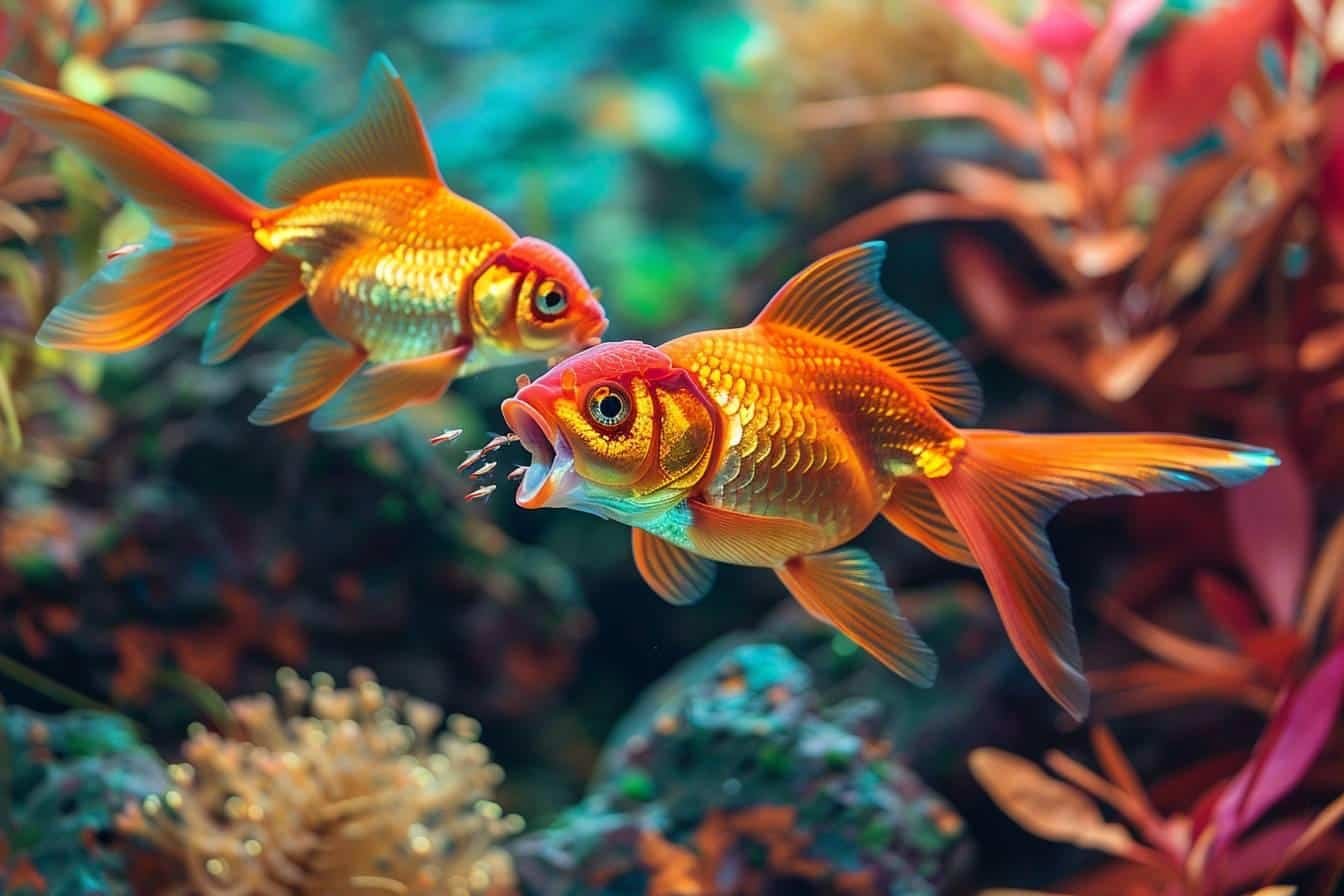L'ancistrus mating is an exciting process that occurs naturally in aquariums. As a pet shop floor manager, I've had the opportunity to observe this phenomenon on many occasions. These bottom-dwelling fish, appreciated for their ability to clean windows and decorations, reproduce with disconcerting ease. Here's everything you need to know to help your ancistrus reproduce successfully.
Ideal conditions for ancistrus reproduction
Water temperature and quality
To stimulateancistrus matingIn order to maintain optimum conditions in your aquarium. The ideal temperature is around 26°C, which corresponds to their natural habitat. I noticed that my ancistrus were particularly active when I kept this temperature constant.
As far as water quality is concerned, these fish prefer soft water with a GH of less than 10. A little trick I've learnt over the years: a major change of water can often trigger spawning. It's like giving them a spring clean!
Space and hiding places
Although ancistrus can reproduce in smaller volumes, I strongly recommend an aquarium of at least 100-150 litres to ensure they are as comfortable as possible. These fish love to have space to move around and explore.
Don't forget to provide suitable hiding places for laying eggs. Females love to lay their eggs in caves, hollowed-out coconuts, tubes or even upturned pots. I once used an old coffee cup as an egg-laying site, and believe me, it worked like a charm!
Food and health
A varied, high-quality diet is essential to prepare your ancistrus for reproduction. Make sure you provide them with a food rich in plants, such as fresh vegetables or algae dried. A well-fed fish is a fish ready to reproduce!
Here is a small table summarising the ideal conditions:
| Parameter | Recommended value |
|---|---|
| Temperature | 26°C |
| Hardness (GH) | < 10 |
| Minimum volume | 100-150 litres |
The ancistrus reproduction process
Couple selection and preparation
The first step is to identify a mature pair. Ancistrus reach sexual maturity when they are around a year old. To distinguish males from females, look at their snouts: adult males have characteristic growths that are absent in females. It's a bit like Differentiating between male and female molly fishEach species has its own particularities!
To maximise your chances of success, I advise you to isolate a pair or a male with two females in a special tank. The male, like a real butler, will meticulously clean the spawning site before mating. It's quite amusing to watch - it's as if he's preparing a 5-star hotel room!
Mating and egg-laying
Ancistrus generally mate at night, away from prying eyes. The female lays between 50 and 100 eggs in the hiding place prepared by the male. Once the eggs have been laid, the male, now a father hen, gently evicts the female from the site. He then takes charge of monitoring, ventilating and protecting the eggs for 5 to 8 days until they hatch.
This paternal behaviour is interesting to observe. I've spent hours in front of my aquariums watching these devoted dads take care of their offspring. It's a real spectacle of nature!
Fry rearing
Around two weeks after hatching, the fry start to swim freely around the aquarium. This is when you need to be vigilant and ready to feed them. Here are a few tips for feeding young ancistrus:
- Start immediately with food for groundfish
- Offer green, plant-rich foods
- Feed them frequently, but in small quantities
Don't forget that these little gourmets have voracious appetites! I once underestimated their eating capacity and found my aquarium transformed into an all-you-can-eat buffet for hungry fry.

Tips for successful reproduction
After years of experience as a passionate aquarist, I have put together a few tips to help you succeed in breeding your ancistrus:
- Vary the egg-laying sites: offer different options (caves, tubes, pots) so that females can choose.
- Maintain a high-quality diet: well-fed fish will reproduce more easily
- Be patient: ancistrus can reproduce 2 to 4 times a year, so don't be discouraged if it doesn't work the first time.
- Avoid crossing different varieties of ancistrus to preserve the purity of the lines.
- Observe your fish regularly: you'll be able to spot the warning signs of impending reproduction.
By following these tips, you should soon see little ancistrus swimming happily in your aquarium. Remember that each pair has its own rhythm, so listen to your fish and adapt to their needs.
Ancistrus reproduction is an exciting adventure that will allow you to learn more about these fascinating bottom-dwelling fish. Whether you're a beginner or an experienced aquarist, observing this natural process will never fail to amaze you. So, are you ready to become the proud godfather of a new generation of ancistrus?
Sources :

1 thought on “Accouplement ancistrus : conseils pour une reproduction réussie”